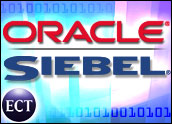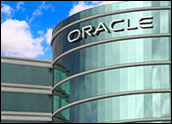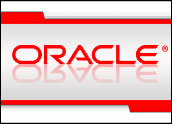
Oracle released its latest semiannual upgrade of its Siebel CRM On Demand product. Unlike previous releases that focused on smaller changes and tweaks, Release 14 incorporates substantial improvements to its architecture and integration capabilities. In fact, it is the product’s most significant update yet, according to Anthony Lye, senior vice president of CRM On Demand.
“It certainly is our largest release ever, and it represents a strong endorsement of Oracle’s commitment to the business,” he told CRM Buyer.
While architecture and integration are the two main areas of change, “we also focused on ease of use — both in the user and the administrative side,” Lye added.
Migration to Oracle Grid
With Release 14, Oracle has migrated Siebel CRM On Demand to the Oracle grid, which now allows it to host the application in a single user environment, as well as in a shared environment, as before.
“We are deploying multiple databases and managing them across pods. Customers, if they want, can deploy in smaller pods — all the way down to the single tenant model,” explained Lye.
Essentially, Release 14 is a new product, he said, for customers that have security concerns and wish to be hosted on their own. Another plus is that the application is still accessible when upgrades or updates are made, something that is not always the case during a multitenant upgrade.
The change means a lower-cost, higher-performance offering for customers, Lye maintained.
“We are providing more value for the same price,” he said. “We are the only application, for instance, that delivers a data warehouse and bundled contact center, as well as the CRM application.”
Included in this offering is a partner subscription module that allows users to extend the application to partners, suppliers and customers.
Product-Based Integration
Release 14 also offers new options to customers that want to integrate the Siebel On Demand product with the Oracle E-Business suite.
“We have built an integration pack between the CRM application and the E-Business suite that integrates at the data layer, the user interface layer, and at the business process layer,” Lye said. This connectivity is accomplished through AIA, or application integration architecture.
User Productivity
Oracle also made some changes to the application’s user interface, Lye noted. Release 14 uses Web 2.0 technologies to simplify user tasks and minimizes navigation steps, mouse clicks and page refreshes. It also provides new homepage customization tools so users can arrange such elements as lists, histories and favorites to match the way they like to work.
Other customization upgrades allow users to embed best practices, streamline data entry and configure different layouts for different types of records. Additionally, support for complex, cross-matrixed organizations makes it easier for them to set up the system to model their business structures and permit access to the appropriate information.
“Although it has done it with less fanfare than some of its competitors, [Oracle’s] Siebel has continued to invest in making its on-demand CRM application easier to use and more customizable to fit a specific sales methodology or strategy,” Rebecca Wettemann, vice president of Nucleus Research, told CRM Buyer.
Key to its future success in the market, she added, will be further steps to integrate collaboration and content, as well as deeper analytics, into on-demand CRM tools.
Gaining Market Share
Oracle On Demand has been making steady progress both in application functionality and market share since the Siebel product was folded under its roof.
Late last year, it announced that it surpassed a milestone of more than 1.7 million users — more than 2,200 customers.
During Q1 FY07, Oracle On Demand revenue grew by nearly 50 percent.
























































Social CRM
See all Social CRM